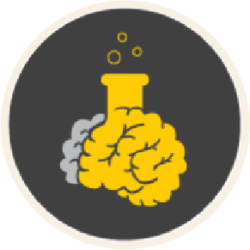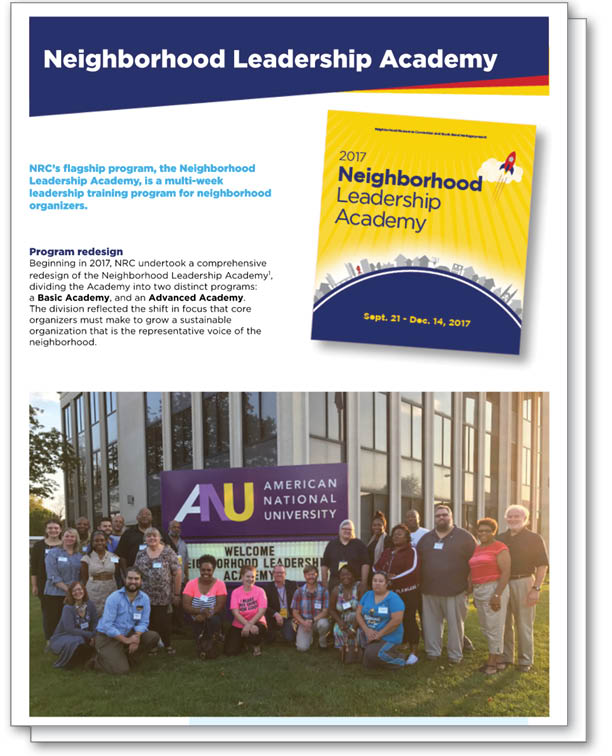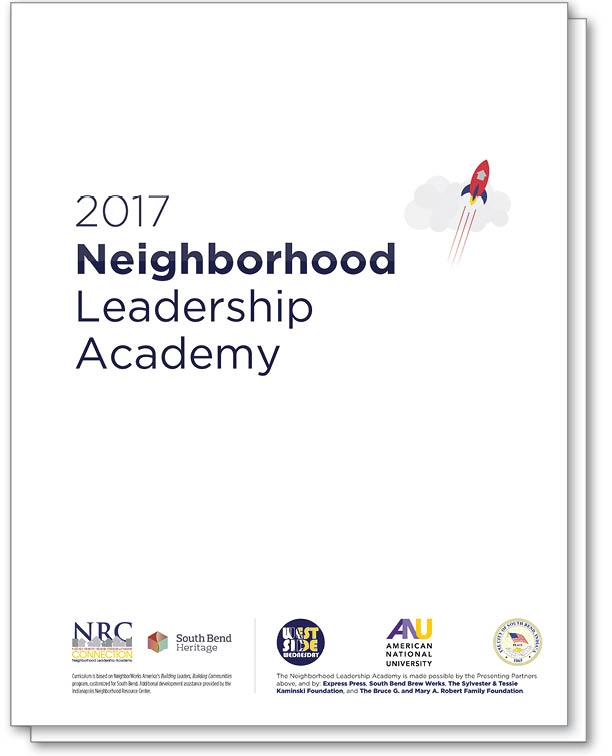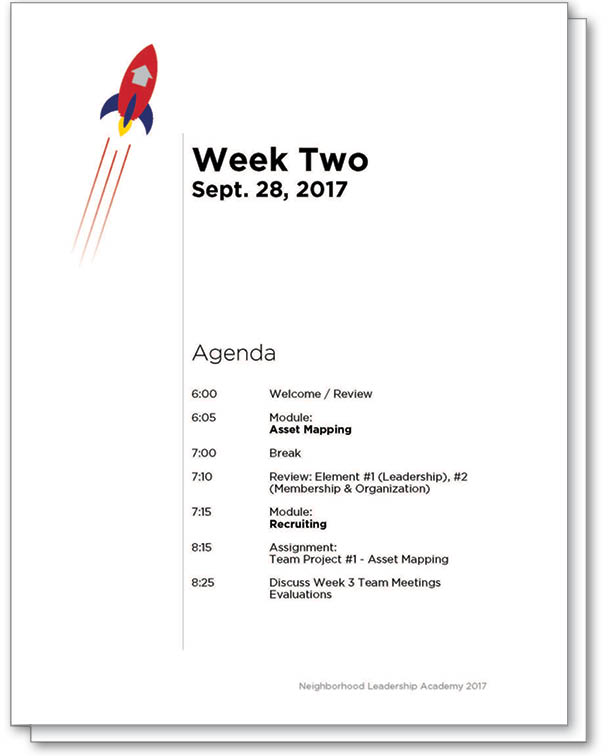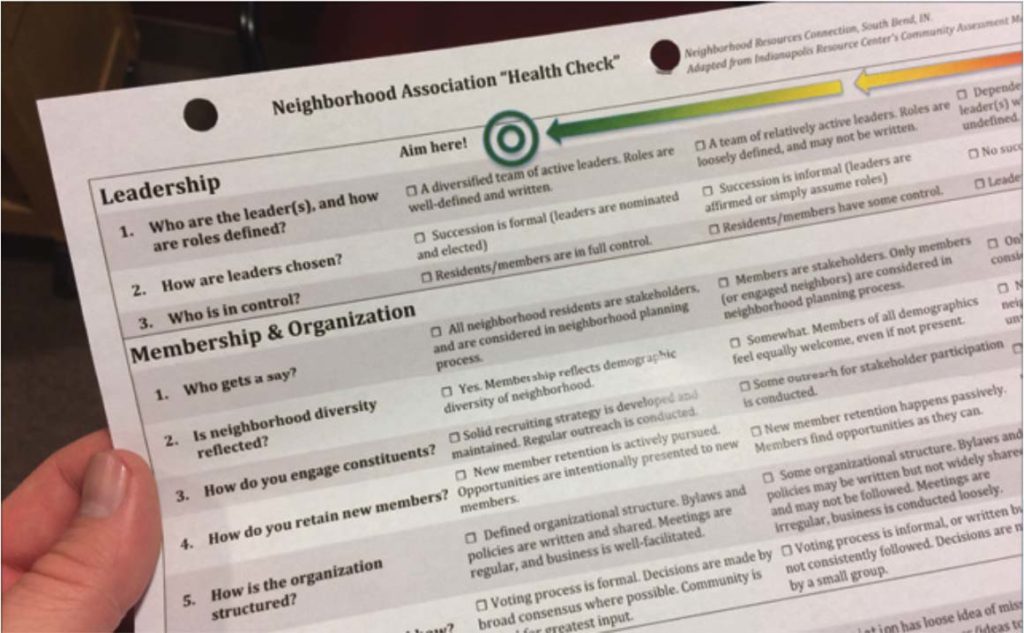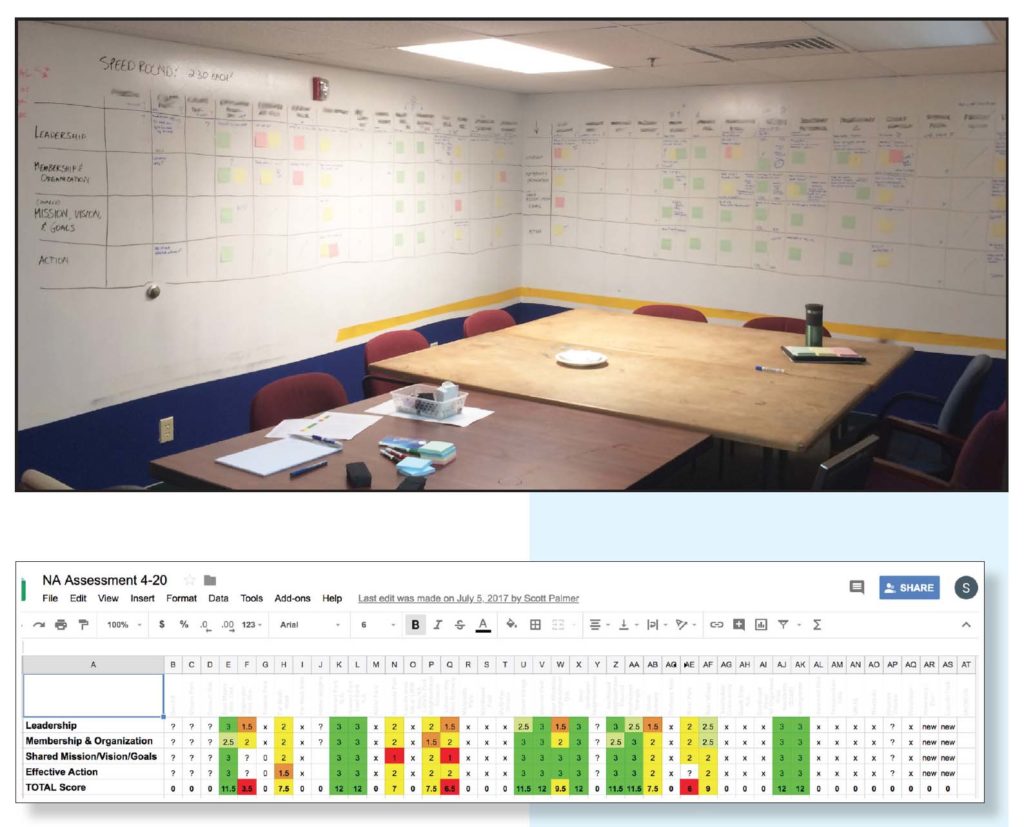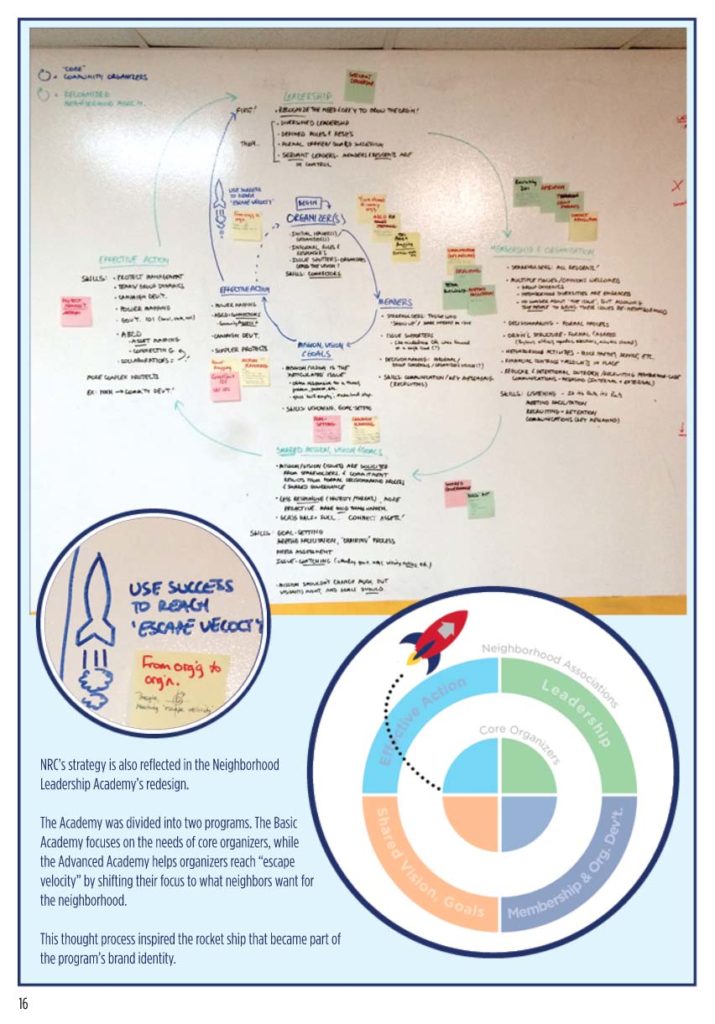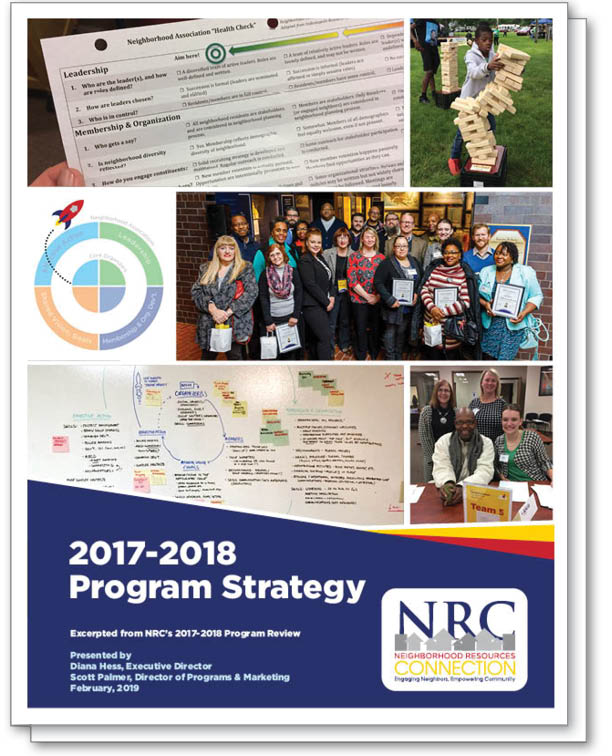Neighborhood Leadership Academy
When a local nonprofit sought an instructional designer to improve its support for South Bend neighborhood associations, I was brought on board to redesign the organization’s flagship leadership training program for community organizers.
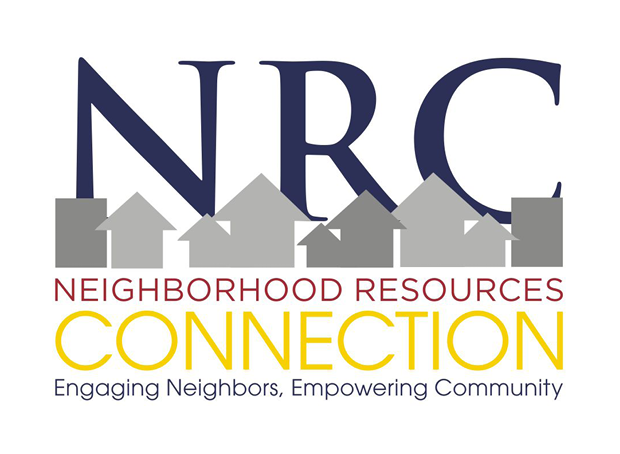
After extensive analysis and consultation with program Directors, volunteers, subject-matter experts and other city leaders, I designed, developed, and implemented a reimagined Neighborhood Leadership Academy.
This instructor-led program, comprised of eight evening sessions over a thirteen week period, invited budding community leaders to identify issues in their community, form teams to address the issues, and create viable action plans.
The Academy culminated with each team’s presentation of their Action Plan to the community at a public event.
Curriculum Samples
Analysis and Design Process
Performance Objectives
When designing a program intended to strengthen neighborhood organizations, an important first step is to define Performance Objectives: what does a strong neighborhood organization look like? When a community organizer is organizing successfully, what are they doing?
With weeks of input from NRC community leadership and Subject Matter Experts from sister organizations in other cities, I set out to develop a simple tool to assess an organization’s strength and identify the areas in which our programs might offer support.
The result was the Neighborhood Association Health Check, a one-page checklist of objective criteria that anyone — including neighborhood association members themselves — could use to measure their organization’s effectiveness in four areas.
These criteria would become the backbone Learning Objectives of our reimagined Neighborhood Leadership Academy.
During our analysis, we identified a critical distinction between the needs of smaller, issue-based organizations and larger, more representative neighborhood associations. Because each audience has different needs, I designed a two-part Academy to reserve advanced topics for the more representative associations that were ready for them.
Our Advanced Neighborhood Leadership Academy, held the following Spring, invited teams from established associations — or those ready to form one — to learn how to shift their focus from what they want to what their neighbors want for their neighborhoods.

Program Strategy
The insight gained during the instructional analysis and design process informed NRC’s entire program strategy, described in this Program Strategy Summary (PDF, 5 pages).
(Excerpted from NRC’s 2017-2018 Program Review – PDF, 79 pages.)
Additional Materials
I presented the results of our instructional design analysis and resulting program strategy to stakeholders during an NRC Open House event. (See 6:25 – 12:00)

